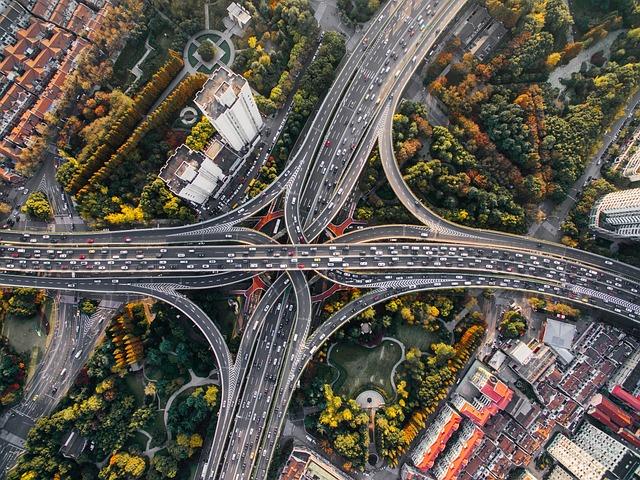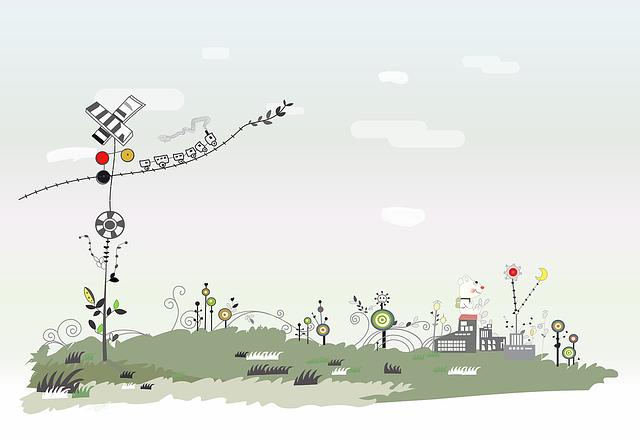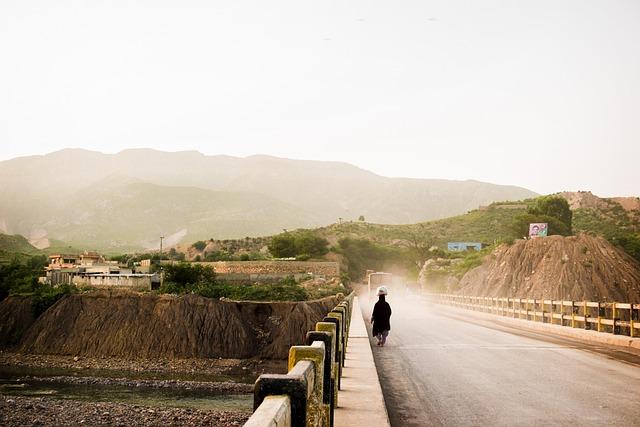In the sprawling tapestry of Pakistan’s growth narrative, infrastructure stands not merely as the skeleton upon which economic vitality hangs but as the lifeblood that pulses through its cities, towns, and rural landscapes. As the nation strides forward, a stark reality looms: the existing framework of roads, bridges, and public services — once the pride of a burgeoning state — now reveals cracks that threaten the foundation of progress. With a youthful population yearning for opportunity and an economy rich in potential yet held back by systematic inefficiencies, the call for infrastructure reform has never been more urgent. This article delves into the pressing need to revitalize and modernize Pakistan’s infrastructure, exploring how strategic improvements can serve as catalysts for sustainable development, societal cohesion, and economic resilience. As we embark on this journey, we will uncover the intricate connections between infrastructural integrity and the future well-being of a nation poised on the brink of transformation.
Paving the Path: The Critical Role of Sustainable Transportation Systems
As Pakistan emerges as a key player in the global economy, the urgency for sustainable transportation systems becomes increasingly clear. With bustling urban centers grappling with congestion and pollution, a transition to greener modes of transport can significantly enhance both environmental and public health. By investing in eco-friendly transport solutions, such as electrified buses, tram systems, and increased bicycle lanes, the nation can reduce its carbon footprint while also easing the burden on its existing infrastructure. Sustainable transport not only conserves resources but also fosters social equity by providing more affordable options to all citizens.
Moreover, a well-designed transportation system can catalyze economic growth and regional development. Efficient public transport networks reduce travel time, enabling businesses to operate more effectively and workers to commute with ease. Integrating these systems with existing urban planning can also enhance land use, leading to optimized spatial growth. Key elements to consider include:
- Multimodal Integration: Encourage seamless connectivity between different transport modes.
- Green Corridors: Develop eco-friendly pathways that prioritize pedestrian and cyclist safety.
- Smart Technology: Implement traffic management systems that optimize flow and reduce congestion.
| Transport Mode | Environmental Impact |
|---|---|
| Bicycle | Zero emissions, promotes health |
| Electric Bus | Reduces urban air pollution |
| Tram System | Efficient land use, minimal emissions |

Bridging the Gap: Enhancing Urban Infrastructure for Economic Growth
The transformation of urban infrastructure holds the key to unlocking economic potential across Pakistan. By investing in robust transportation systems, modernized utilities, and accessible public spaces, cities can create a conducive environment for businesses and communities to thrive. Essential improvements may include:
- Transportation Networks: Expanding roadways, developing metro systems, and enhancing public transit options can significantly reduce travel time and increase productivity.
- Utilities Improvement: Upgrading water supply systems and energy grids ensures reliable access to essential services, thereby attracting investments.
- Technological Integration: Implementing smart city solutions can streamline urban management and enhance the quality of life.
Moreover, the integration of green spaces and sustainable design principles into urban planning not only boosts the aesthetic appeal but also fosters community engagement and environmental stewardship. Investments in infrastructure can lead to job creation and bolster local economies. For a clearer perspective, the following table summarizes vital infrastructural reforms and their anticipated impacts:
| Infrastructure Reform | Expected Impact |
|---|---|
| Public Transport Expansion | Reduced congestion, improved accessibility |
| Water and Sanitation Upgrades | Health benefits, increased quality of life |
| Green Space Development | Environmental sustainability, community well-being |

Empowering Communities: Investing in Water and Energy Resources
Access to essential resources like water and energy is not just a privilege; it’s a fundamental right that can transform the fabric of communities. By prioritizing sustainable development, Pakistan can harness its rich natural resources to improve living standards and spur economic growth. Initiatives such as rainwater harvesting systems can provide clean drinking water, while investments in solar energy infrastructure can reduce dependency on imported fuels and enhance energy security. Together, these projects not only ensure a reliable resource supply but also empower local populations by decreasing their vulnerability to climate change and economic fluctuations.
To foster this empowerment, collaboration among government, NGOs, and the private sector is vital. Local communities should be involved in decision-making processes to ensure that infrastructure projects reflect their needs and aspirations. Strategies could include:
- Community education programs that promote efficient resource use
- Public-private partnerships to fund and manage water and energy projects
- Incentives for renewable energy installations in rural areas
Implementing such strategies not only enhances resource management but also creates job opportunities, thereby bolstering local economies. In order to track progress and allocate funds effectively, a transparent framework for monitoring projects and measuring their impact on communities should be developed.

Future-Proofing Education: Building Facilities for a Skilled Workforce
As we envision a robust educational landscape, it is imperative to focus on the infrastructure that supports learning. Modern educational facilities should incorporate adaptable spaces that cater to diverse learning styles, promote collaboration, and integrate technology seamlessly. Key components of future-ready schools include:
- Flexible Classrooms: Spaces that can be easily reconfigured for group projects or individual study.
- Tech-Integrated Labs: Equipped with the latest tools to inspire innovation in science, technology, engineering, and mathematics (STEM).
- Environmental Sustainability: Facilities that use renewable energy, promoting resource management and ecological awareness.
- Accessible Learning Areas: Ensuring that all students, regardless of ability, have equal opportunities to engage and learn.
To effectively nurture a skilled workforce, it is essential that these modern facilities also reflect the needs of local industries, allowing for vocational training and skill development. Partnerships between educational institutions and businesses can lead to innovative programs that align with market demands. A structured approach may include:
| Program Type | Industry Sector | Key Objectives |
|---|---|---|
| STEM Workshops | Information Technology | Enhancing digital skills and coding literacy |
| Vocational Training | Manufacturing | Hands-on experience with machinery and techniques |
| Internship Programs | Healthcare | Real-world experience in patient care and management |
| Entrepreneurship Courses | Business | Fostering innovation and business acumen |
In Summary
As we stand at the crossroads of opportunity and challenge, the path toward revitalizing Pakistan’s infrastructure emerges as a beacon of hope. By embracing comprehensive reforms, fostering innovative partnerships, and prioritizing sustainable practices, the nation can not only enhance its economic landscape but also ensure a brighter, more resilient future for generations to come. The need for action is urgent, but the potential rewards are boundless. Together, by placing infrastructure at the forefront of national priorities, we can build the framework for growth, connectivity, and unity. Let us commit to turning these visions into realities, paving the way for a stronger, more prosperous Pakistan.



